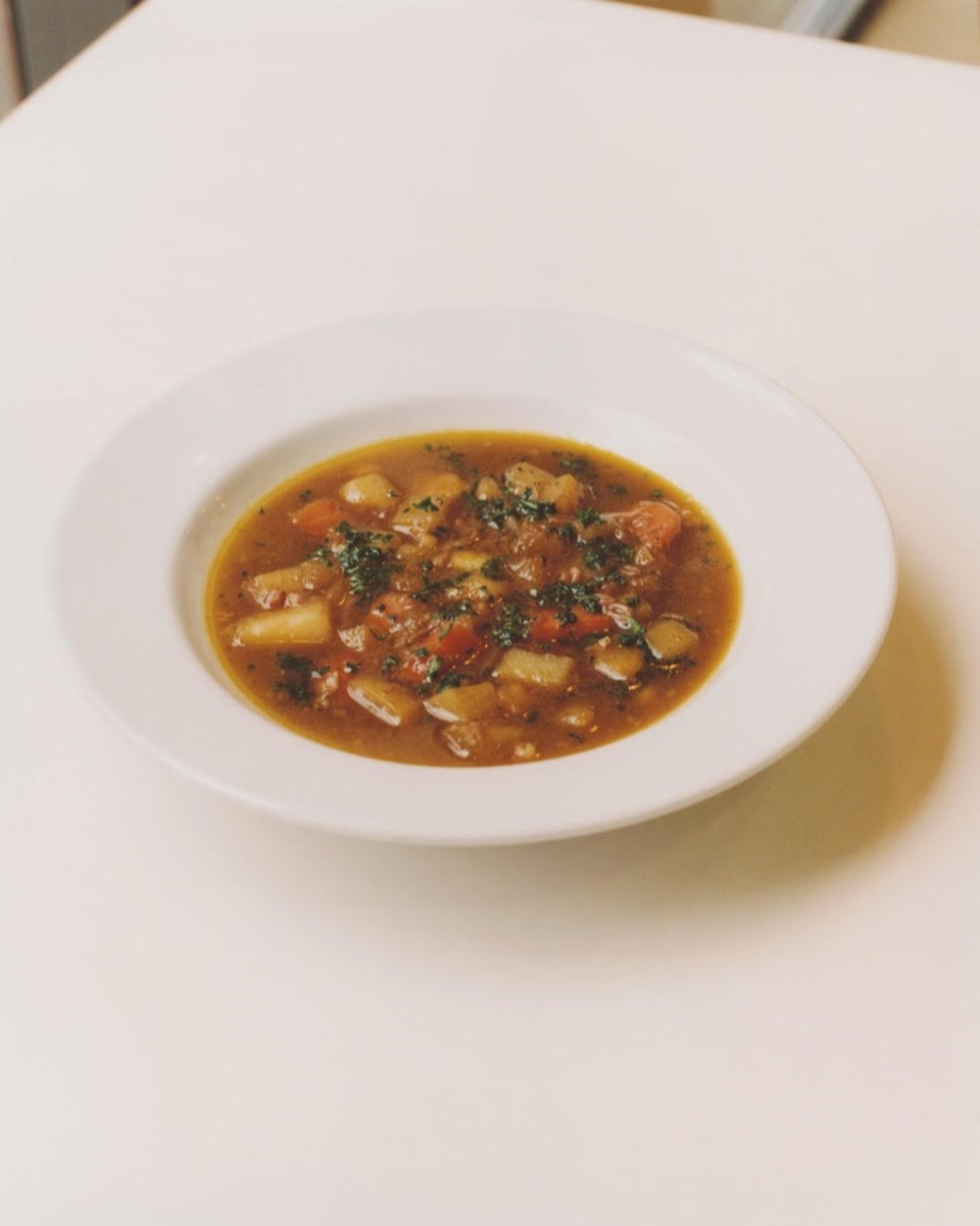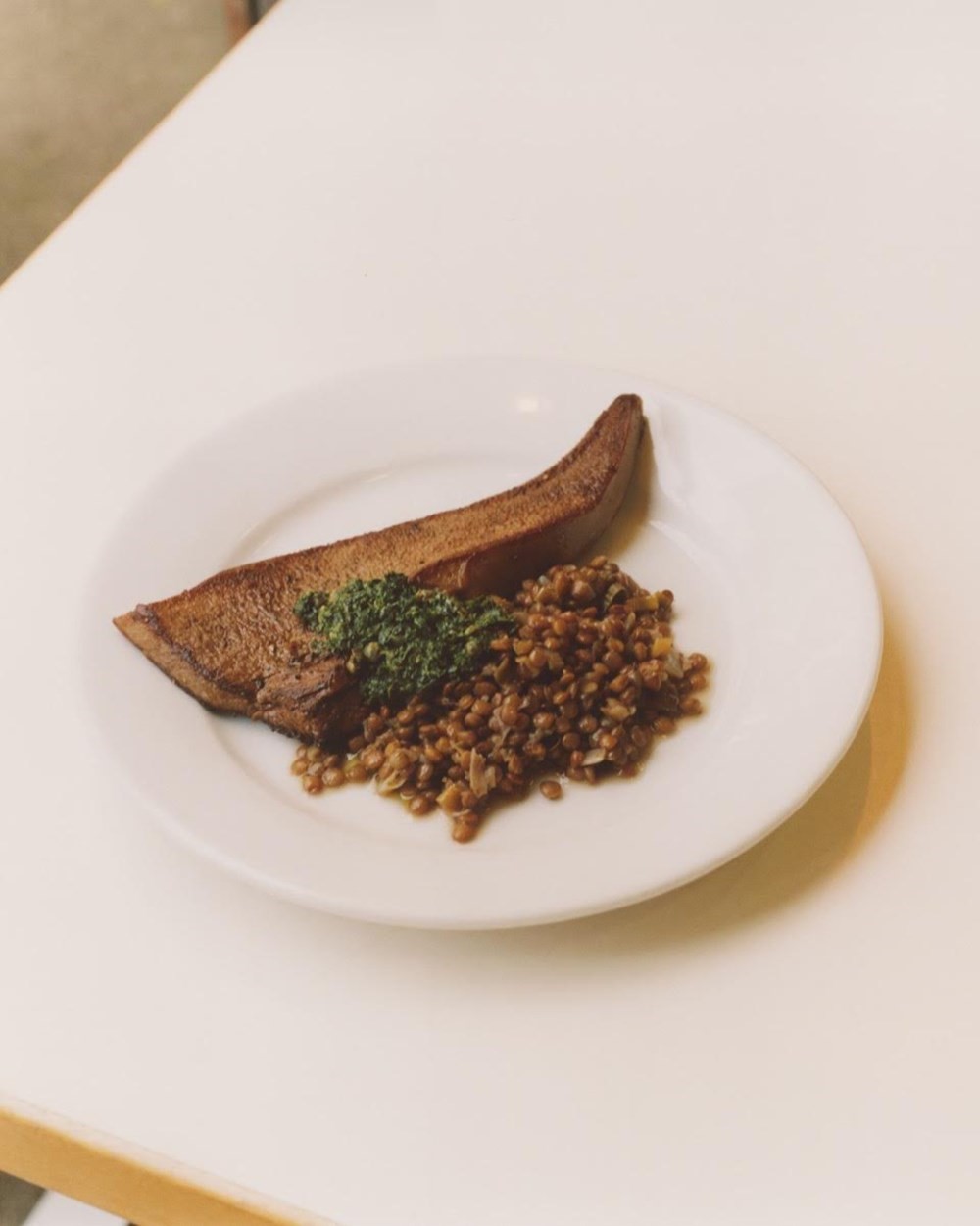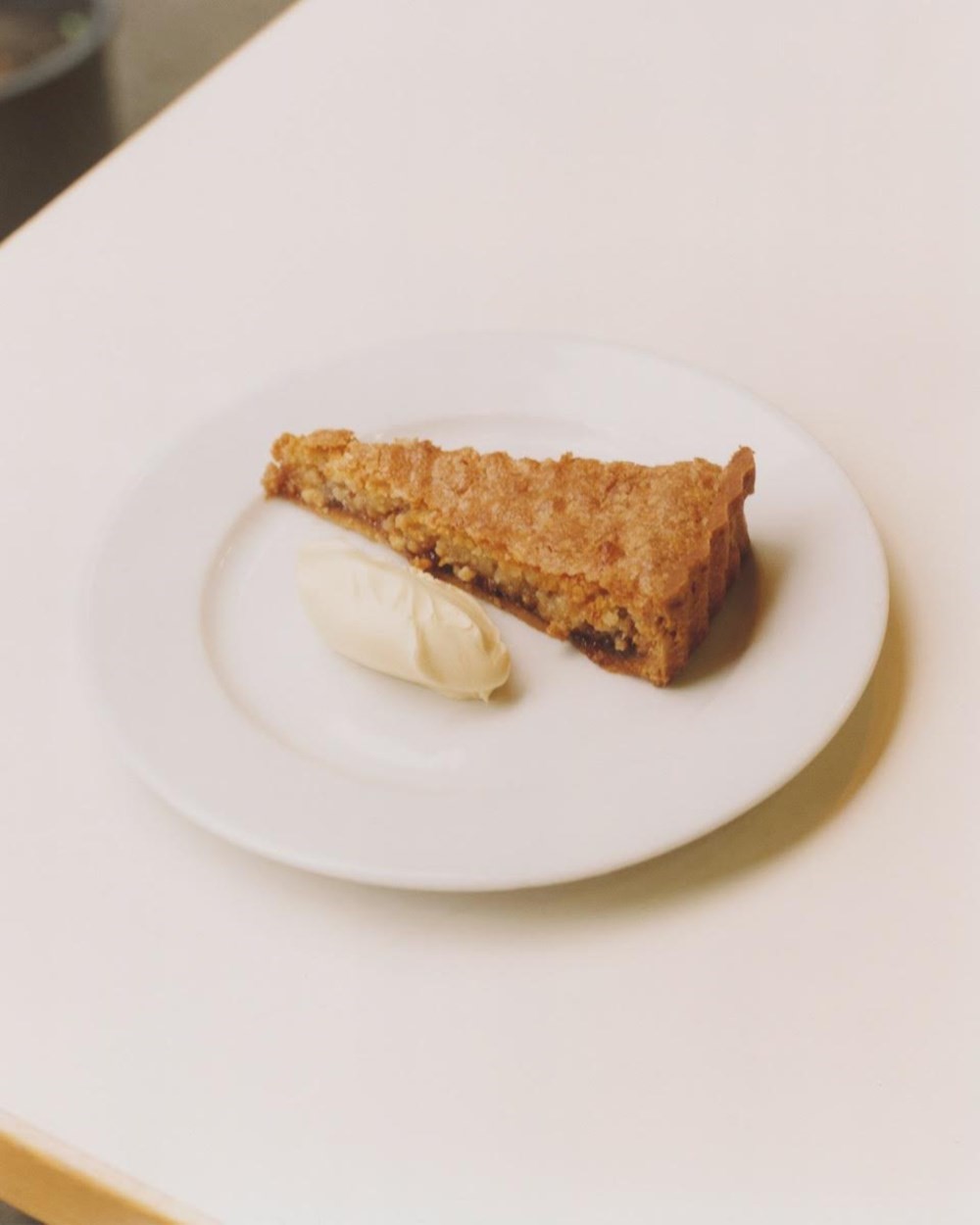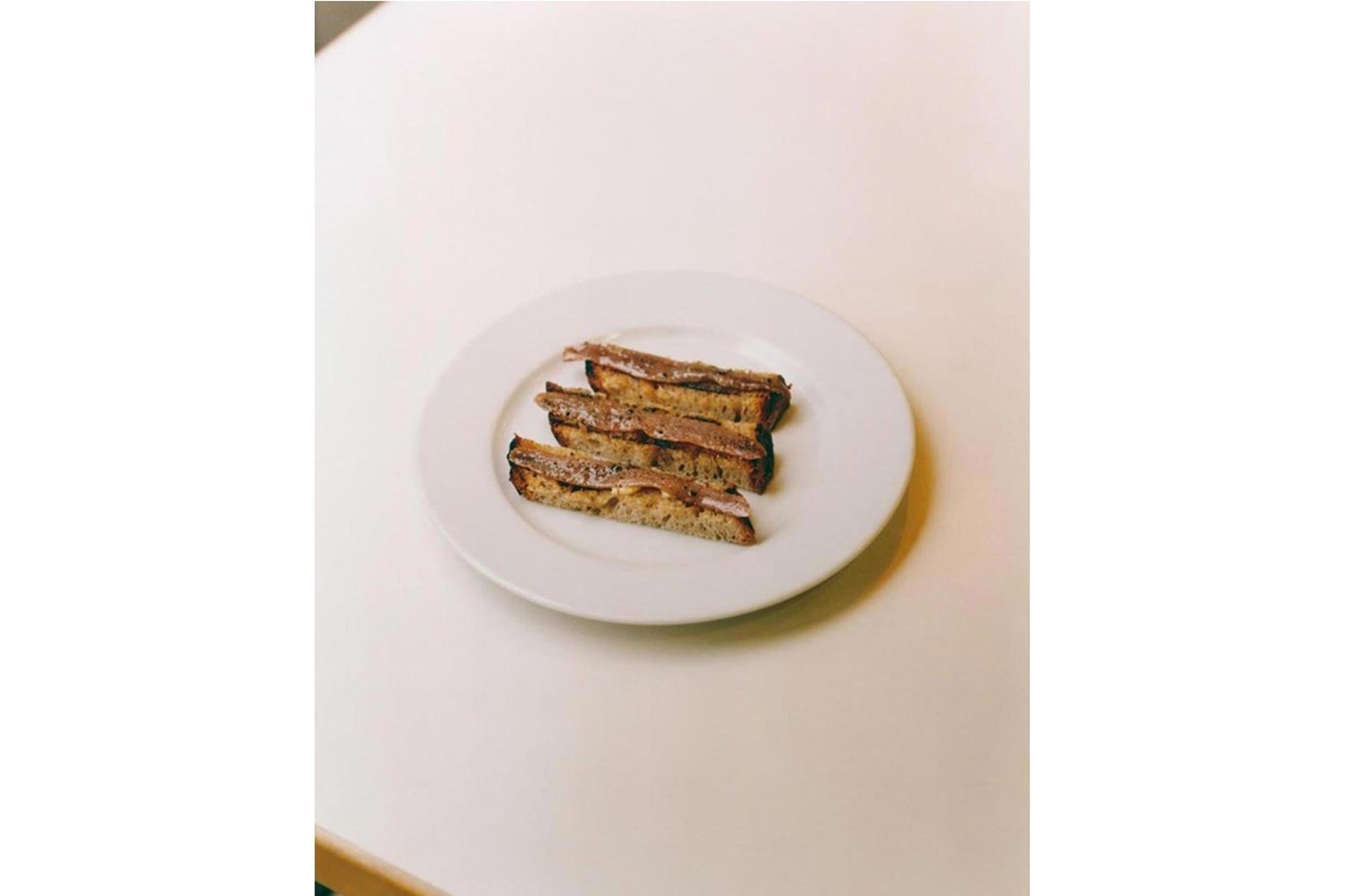Pictures of food, once the preserve of books and Good Housekeeping magazine, have proliferated online, becoming more sophisticated and spawning countless viral memes and hashtags: 2014 was the year of #kale and 2015 was the year of #avotoast. What a dish looks like as you scroll down is integral to its viral potential. Colour is important. Green is certainly up there (see #greenjuice), as is pink: pomegranate seeds gild thousands of Insta-hits. Nigella Lawson recently declared that she is “all about the pink and green food,” and the recipes in her new book and TV series make these bright, popping, screen-friendly colours their visual leitmotif.
Anna Tobias, the 29-year-old head chef at the secluded Shoreditch restaurant Rochelle Canteen, prefers her food a rather less Instagram-able colour: brown. When thinking about how to characterise what kind of cooking she really felt passionate about, brown food was top of her list. “Brown food for me is a metaphor for simple food or food that isn’t scared to just be itself,” she says. Tobias prepared us a four-course menu that is an ode to brown food. First, a finger of anchovy toast, followed by scotch broth, then ox tongue with lentils and green sauce, and for dessert, a slice of Bakewell tart, fresh from the oven, with a spoonful of clotted cream.
“Brown food for me is a metaphor for simple food or food that isn’t scared to just be itself” – Anna Tobias

It’s a confident move for a young chef to present toast with butter and a single anchovy as a dish that defines her cooking – ostensibly something you could make at home. “I think anchovy, butter and toast is such an elegant combination, especially if you get the whole fillet on a finger of toast – I just think that’s quite glamorous,” she says. Upon eating it, you don’t doubt her choice: the anchovy, full of deep, savoury flour that’s almost erotic it’s so overwhelming, is supplied by Brindisa; the bread, thinly sliced and toasted with a gentle char, is a St. John Bakery white loaf; and the creamy, salted butter is from a farm in Glastonbury.
The principle of “letting well alone” first expounded in an essay by food writer Elizabeth David, published in her collection An Omelette and a Glass of Wine, is one that Tobias feels an affinity for. “I feel that sometimes things are added to dishes that are superfluous. I would love people to embrace the idea of cooking delicious food but not to keep on adding things,” she comments. “When you look at a lot of dishes today there are a couple of flowers, a splodge, a crumb and lots of textures as well as ingredients. Suddenly everything has to be crunchy, and soft and a jelly – there has to be everything, rather than just one great thing. Sometimes, it’s nice to be presented with a plate of food that you can just eat, rather than wondering what everything is and having to congratulate the chef on how clever they’ve been,” she adds.
“Sometimes it’s nice to be presented with a plate of food that you can just eat, rather than wondering what everything is” – Anna Tobias
The Scotch broth, simply presented with the smallest sprinkle of finely chopped fresh parsley, is composed of broth made using leftover gravy from roasting lamb shoulders with a few diced carrots, swede and turnip and some spelt grains cooked à point. There is no grandstanding, but there’s an astonishing lamby depth to the broth and a bit of bite left in the vegetables, all of which you can taste individually. “Scotch broth is such a classic, soothing, winter thing. People don’t talk about soup enough. Soup is possibly my favourite thing to eat. I grew up on it. Even if you’ve got half a pepper and a slightly shabby looking little gem lettuce, you can make something good. It has a great economy – and that’s I guess what Scotch broth is about.”

Everything Tobias makes tastes and looks like itself. The tongue most certainly looks like a tongue, rudely curled like it’s mocking you and with taste buds still intact, now crisped by the heat of the pan. I had not eaten tongue since I was a child, sliced and cold at my grandmother’s house. I felt a tad squeamish, though I needn’t have: here it is hot, yielding, faintly pink in the middle and with a taste somewhere between steak and liver, tempered by mildly flavoured lentils and given a kick by the acidic green sauce.
After graduating from studying modern languages at Oxford in 2008, Tobias wrote to chefs she admired, hoping that one would take her on. Jeremy Lee, now head chef at clubbable Soho joint Quo Vadis, then in charge of the Design Museum’s Blueprint café, wrote back and took her on as a commis chef making cold starters and pastry. From Blueprint, Tobias went to the River Café where over three years, she learned how to do everything in the kitchen – butchery, fish, sauces, pasta, before leaving to work at Rochelle Canteen where she has now been head chef for two years.
“When you put crumble, Bakewell tart or treacle tart on the menu people say ‘oooh I haven’t had that for ages’, it has those memory associations, that Proustian rollback” – Anna Tobias
It was while working with Lee that Tobias “fell in love” with British puddings. “I think British puddings are the best, they are not apologetic – a proper pudding is a good thing. A lot of puddings today can be a bit polite, a bit too yogurt and granola–like,” she reflects. “Today I’ve made a Bakewell tart, again, another classic British pudding. I like that it’s essentially a frangipane: almonds, butter, and sugar; I like that it’s rich and that there’s a jammy layer, quite W.I., here we’ve used greengage jam that we made over the summer. Again, it’s quite elegant looking, and it’s quite comforting. At the restaurant, those school day nursery classics are the best sellers. When you put crumble, Bakewell tart or treacle tart on the menu people say ‘oooh I haven’t had that for ages’, it has those memory associations, that Proustian rollback.”

